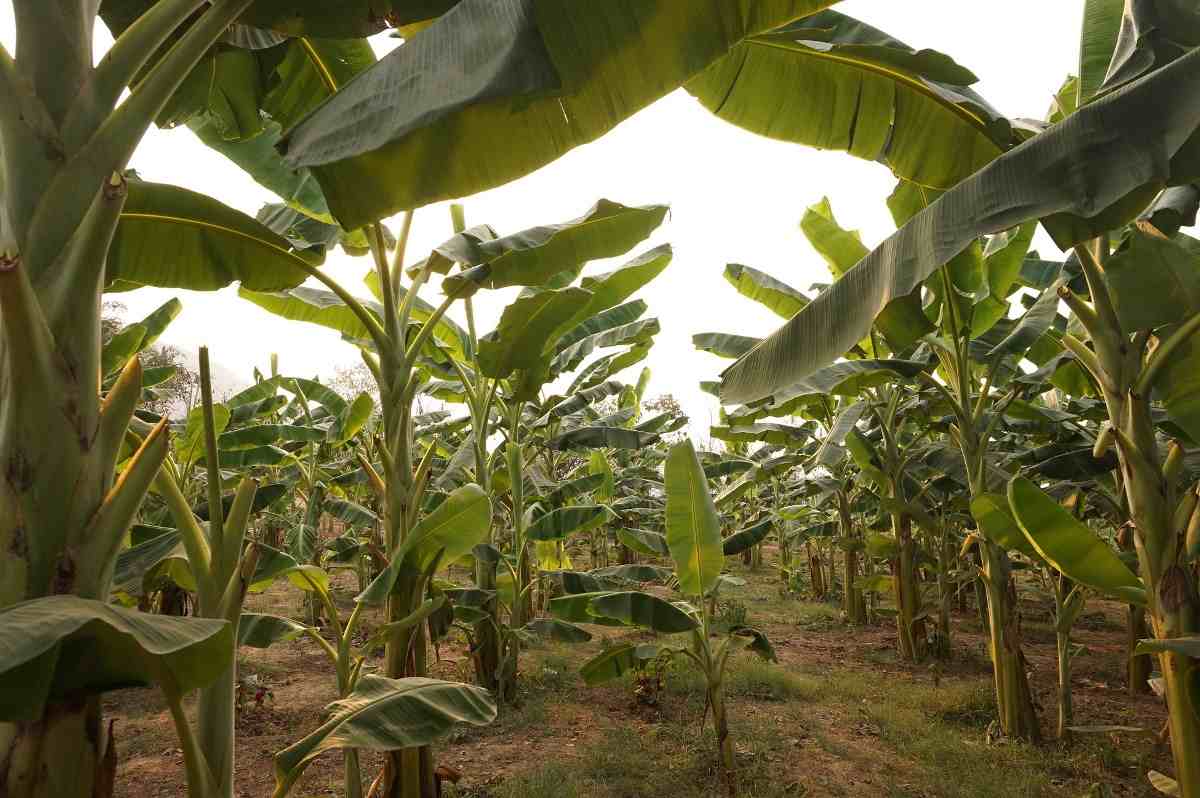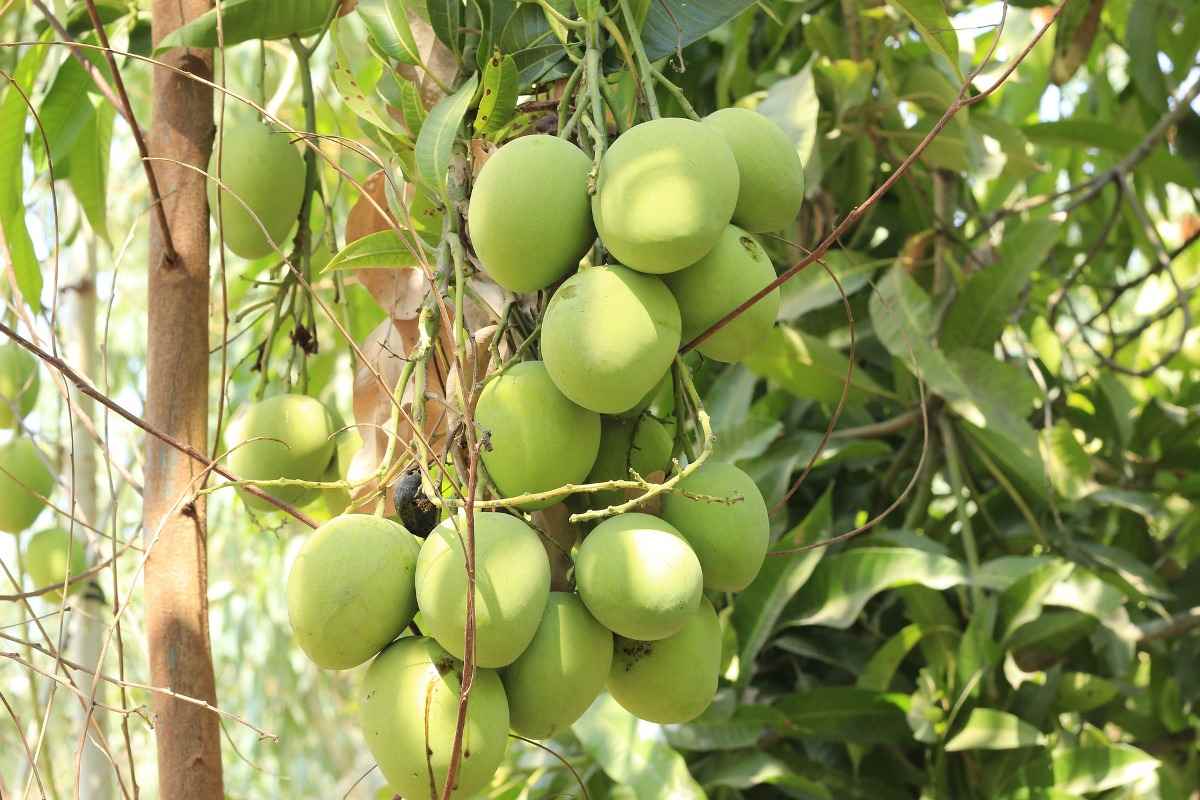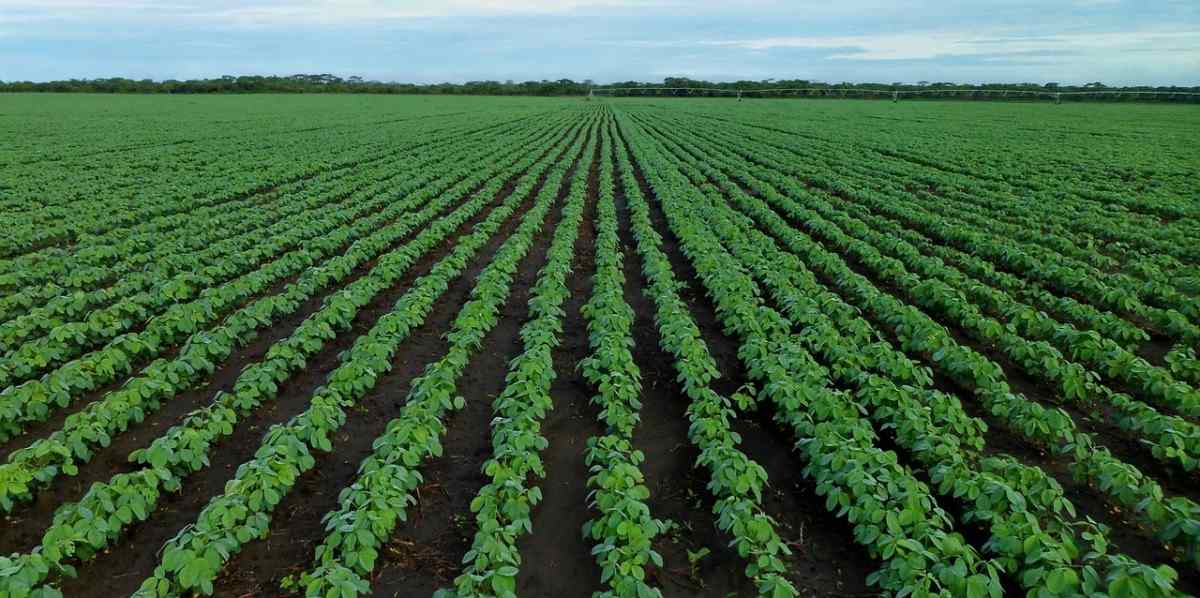Agriculture farming in Maharashtra
Agriculture is the backbone of the state of Maharashtra. Maharashtra’s economy is predominantly agricultural. It is the main occupation of the people. Both cash crops and food crops are grown in the Maharashtra state.
A step by step guide to agriculture farming in Maharashtra
The state has huge areas, under fruit cultivation of which bananas, mangoes, grapes, and oranges are the main ones. The total irrigated area used for crop cultivation is 33, 500 square kilometers. Agriculture in the state is mainly rain-fed. The state has 24% of the drought-prone area of the country. Though, the state has the potential for growth in the agricultural sector despite challenges.

Different types of soils in Maharashtra for agriculture farming
Maharashtra’s soil is divided into nine types.
1. Coarse shallow soils (high level)
2. Medium black soils
3. Deep black soils
4. Redish brown soils of hill slopes
5. Coastal alluvium
6. Yellowish-brown soils
7. Yellowish-brown soil of plains (mixed origin)
8. Laterite and lateritic soil
9. Coastal saline
Food processing industries in Maharashtra
Food processing industries in Maharashtra contains very basic processing. The main food processing industries in the Maharashtra state are in the sectors of sugar, poultry, milk, flour mill, rice mill, meat, edible oil, vanaspati, fruit and vegetable units, milk processing units, etc. There exist huge opportunities for modernizing food processing units in the State. Rice, Soybean, wheat, grapes, jawar, pomegranates and mangoes are the main crops that are available in the Maharashtra state for a primary and secondary process. In the same way, there is a vast potential for development and setting up processing units for tomatoes, cabbage, onion, cauliflower, and okra and. In general, fruit juice pulp and concentrated units, distillery, winery, pickles, dal mill, rice mill, flour mill, soybean extraction, and refining units, etc. can be set up in the industrial areas of the State.
In case if you miss this: Organic Pumpkin Farming.

Agro and sub-agro climatic zone of Maharashtra for agriculture farming
The Maharashtra state has been divided into 9 agro-climatic zones based on soil type,rainfall, and the vegetation as mentioned below;
1) South Konkan coastal zone
2) North Konkan coastal zone
3) Western Ghat zone
4) Transition zone – 1
5) Transition zone – 2
6) Scarcity zone
7) Assured rainfall zone
8) Moderate rainfall zone
9) Eastern Vidarbha zone
Major strengths of agriculture farming in Maharashtra
The major strengths include;
- Topography and agro-climatic conditions conducive for helping horticulture and facilitate diversification into high-value horticultural crops;
- The large population in urban areas that has a concentration of industrial and financial activity – industrial sector supports agricultural sector through backward and forward linkages as it offers a ready market for agricultural commodities and manufactures and supplies of inputs like machinery, seeds, etc to agriculture;
- Large production of fruit and vegetable (onion, grapes, mangoes, oranges, pomegranates, etc.) present tremendous export potential;
- Investment in onion storage infrastructure
- Installed Vapor Heat Treatment Facility prevents fruit fly and helps promote exports of mangoes;
- Agri Export Zones for grapes, grapevine, pomegranate, onions, mangoes, etc.;
- Proximity to international and seaports;
- A large number of agro-processing units;
- Infrastructure to support the growing floriculture industry;
- A major producer of milk (7.4 million tons), eggs and poultry meat;
- The long coastline of 720 km. facilitates fishing; and
- The strong road network of 2,37,668 km road length that connects 97% of villages
Climatic conditions in Maharashtra for agriculture farming
Maharashtra has a typical monsoon climate, with hot, cold and rainy weather seasons. Tropicalsituations prevail all over the state.
Summer – March, April, and May are the hottest months in Maharashtra.
Rainy Season – Rainfall starts normally in the 1stweek of June. And July is the wettest month in Maharashtra, while August also gets substantial rain. The rainy season starts its retreat with the coming of September from the state.
Winter – Cool dry spell, with clear skies pleasant weather and gentle breeze, prevails from November to February. But the eastern part of Maharashtra sometimes obtains some rainfall. Temperature varies between 12 to 34°C during this season.
Rainfall in Maharashtra state
Rainfall in Maharashtra state differs from region to region. Raigad, Ratnagiri, Thane, andSindhudurg districts, receive heavy rains of an average of 200 centimeters annually. But the districts of Nasik, Ahmednagar, Pune, Dhule, Satara, Jalgaon, Solapur, Sangli, and parts of Kolhapur get rainfall less than 50 centimeters. Rainfall mainly concentrates on the Konkan and Sahyadrian Maharashtra. Central Maharashtra state receives less rainfall. Though, under the influence of the Bay of Bengal, eastern Vidarbha receives good rainfall in July, August, and September.
Animal husbandry and dairy sector in Maharashtra
Animal Husbandry plays an important part in the agriculture in Maharashtra state. Animal husbandry plays an important part in the rural economy. Cattle rearing for milk products and milk, flesh, and leather are an important occupation for most of the people living in the state. Since animal husbandry is included in the state list, the responsibility of taking care of the cattle belongs to the Maharashtra state. The schemes are related to sheep development, poultry, piggery, livestock health, and fodder development. The Department of Animal Husbandry has taken the responsibility of directing the people about taking care of their cattle and treatment of the sick cattle. Apart from that, there are cattle-breeding farms in the districts and the talukas under the districts of Maharashtra. There are veterinary dispensaries, District Animal Husbandry officers, livestock supervisors, and Extension Officers an animal Husbandry.
Floriculture farming in Maharashtra
Maharashtra is the main producer of floriculture products with more than 4000 hectares of area under various flowers. The main traditional flowers grown in Maharashtra are Rose, Marigold, Chrysanthemum, Tuberose, and Jasmine. Whereas, Gladioluses, Zinnia, Aster, Lilies, Stacie, Gerberas, and Carnations are grown among the non-traditional flowers. Maharashtra has emerged as a leading State for the production, consumption, and export of flowers in the country. The major important features of floriculture development in the Maharashtra state is setting up of a large number of Export Oriented Units with foreign collaboration and investment. Maharashtra state is offering state of the art infrastructure for the floriculture industry to grow. Similarly, the peaceful and non-hazardous environment is responsible for the successful operation of these units.
List of agriculture farming crops in Maharashtra
Out of total cultivable land in Maharashtra, around 60% of the land is under food grain crops, and Maharashtra contributes only 5.8% production of food grains in India because Jowar is a dominating crop but its yield is low (583 kg/ha). Maharashtra is a major producer of Arhar and Jowar contributing 46.09 and 29.11 %, respectively to the total production of India. It is 2ndlargest producer of Soybean (28.14%), Cotton (22.21%), and total cereals (13.56%) in the country.

Major crops in Maharashtra are;
Rainfed (Kharif) season crops are Paddy, Nagali, Jowar, Niger, Groundnut, Bajra, and Urad. The important crops cultivating in Maharashtra include Rice, Bajra, Jowar, Wheat, Pulses, Turmeric, Cotton, Onions, Sugarcane, and several oil seeds including Groundnut, Sunflower, and Soybean.
Maharashtra state is a leading state in agriculture. Principal crops grown in the State are Rice, Bajra, Jowar, Wheat, Tur, Urad, Mung, Gram, and other Pulses. The State is the main producer of oilseeds. Sunflower, groundnut, soybeans are the major oilseed crops. The important cash crops are Sugarcane, Cotton, Turmeric, and Vegetables. Maharashtra State is a pioneer in onion production in the country. It is today emerging as a significant horticultural State in the country. Different types of soil, diverse agro-climatic conditions, developed communication facilities, well greenhouse, an increasing trend in drip irrigation, use of cool chain facilities, and vibrant farmer organizations offer wide chances to grow different horticultural crops in the State. Best quality grapes produced in the Maharashtra state are now exported to other countries. Mango, mainly ‘Alphanso’, grown in Konkan, has already established name in the international market. The State has an area of 13.66 lakh hectares under various fruit crops like Banana, Grapes, Mango, Orange, Cashew nut, etc. The annual crops are Sugarcane, Banana, Perennial, Mango, Cashew, and Guava
Fisheries sector in Maharashtra
Maharashtra accounts for an important share so far as marine fish production is the country is concerned. The fisheries sector contributes to the socio-economic developments of Maharashtra. The Maharashtra state has 720 km of coastline. There are as many as 32 varieties of fish harvested/produced in Maharashtra state. And, among these varieties, prawns/shrimps, ribbon fish, pomfrets, and cattle fish accounts for major share in total fish production of Maharashtra. Fish Production in Maharashtra is 5.50 Lakhs Metric Tons Per Annum and it contributes around Rs.1500.00 crores foreign exchange.
Department of fisheries, Government of Maharashtra
The department of Fisheries, Government of Maharashtra state aims to support economically backward population and improve the fishery sector by adopting modern sustainable techniques in various fields of fisheries. It makes employment for economically backward, cheap, and nutritious food for the society and the foreign exchange for the nation. Considering various resources, opportunities, trends, weaknesses, and threats department has formed strategies for the future.
Strategies of the Department are as follows;
Marine:
- Strengthening of Infrastructures such as Modernisation of existing harbors Construction of new fishing harbors and jetties
- Modernization of intermediate fishing crafts
- Announce Mariculture and Sea ranching
- Explore Deep Sea Fishing Resources
Inland:
- Optimization of fish seed production of existing fish farms
- Reservoirs Fisheries Development
- Extension and Training
- Strengthening of marketing infrastructure
- Strengthening of Inland Fisheries Statistics by information networking
Brakish Water:
- Improvement of the existing farms for Brackish Water aquaculture to augment shrimp production
- Training of farmers in manpower development and coastal aquaculture.
- Formation of new aquaculture farms as per norms of Coastal AquacultureAuthority
- Present thrust is to augment the shrimp production through improving the productivity of existing farms as well as bringing more area under brackish water farming
Major developments in agriculture farming in Maharashtra State
- 1stState to adopt Dry Land Farming Technology
- Emphasis on the development of horticulture along with Agriculture
- State Seed Corporation – 1st farmers company in the seed sector
- Pioneers in Co-operative network – Dairies, Sugar factories, Water user associations
- Four State Agricultural Universities
- Presence of effective and research-based Farmers Organisations
- Acceptance of latest technology by Grape farmers like Eurepgap, Agmark, Bar-coding, and Residue Monitoring system, etc
- Concept of contract farming and corporate farming is in the way of promotion
- An area of 13.66 lakh hectares under horticultural and 4 lakh hectares under vegetable
- The largest producer of Seedless Grapes (78%), Mandarin oranges (75%), Banana (75%) Onion(63%), Tomatoes (42%) of the total production in India. Alphanso Mangoes accounts aimed at 90% of India’s export in mangoes.
- The highest number of poly houses (1271) maintained by small farmers for cultivation of flowers
- Leads the sugar industry sector with 200 sanctioned and 150 productive cooperatives sugar mills
- Nearly 40% turnover of the seed industry in the country
- More than 60% of the area under drip irrigation, thus stands 1st in the country
- Implementation of Agriculture Export Zones
Agricultural farming subsidies in Maharashtra
Agricultural subsidies are essential, as the Indian economy is largely dependent on the farming sector. In the same way, a significant chunk of farmer’s investment is dedicated to the pieces of machinery. As machines and technology ease the cultivation process by replacing the tedious traditional man-work with the quick and efficient machine work. Consequently, this could be in the form of indirect subsidy (agricultural income is tax-free) or direct subsidy (direct cash to farmer). Though, direct subsidies are preferred as they provide direct purchasing capacity.
Under the Farm Mechanization Scheme, the center encourages to inculcate the use of modern techniques and machinery. Therefore, in the case of small, marginal, and SC/St farmer, it provides a 35% subsidy for tractor and 50% for other machines. Contrarily, general categories get 25% for tractor and 40% for other machines. Additionally, it assists in the purchase of a tractor, power tiller, harvesters, Threshers, vehicles, and other agricultural implants. Additionally, facility Term loans are offered with repayment of 5-9 years. Also, no margin for loans under Rs 1 lakh.
Solar water pump scheme for farmers of Maharashtra
Solar water pumps scheme for farmers in Maharashtra is launched by the state government of Maharashtra state. Under the state government scheme, receivers are supposed to get solar pumps at a highly subsidized rate and farmers have to pay just 5% of the pump’s total cost.
Maharashtra government ambitious scheme for installing5 lakh solar water pumps across the state for farmers. The government has given a contract for a minimum of 10,000 solar pumps to install in the pilot phase. One solar pump cost between Rs 3 and Rs 5 lakh depending on the horsepower of the pump. The scheme applies to all districts in Maharashtra state. To get benefits from this scheme, a farmer has to have a landholding smaller than 5 acres. The farmers have deposited money with the state government for the installation of those pumps. The State government also relaxing the norms from 5 to 10 acres to get more applications for the installation of solar water pumps. The government has aims to offer a solar water pump on a subsidy basis for agriculture in Maharashtra state.
Benefits of solar water pump scheme for farmers in Maharashtra state;
- Subsidy to install solar water pumps
- Saving energy and bills
- No impact of power cuts and load shading
Agricultural farming problems faced by the Maharashtra state
Fluctuations in rainfall –This problem although faced everywhere in the country, still needs to be mentioned as one of the most important problems in Maharashtra state too. If rainfall by even much as 2days can cause a noticeable effect on the produce.
Illiteracy about policies, no proper guidance –People may have resources, but the knowledge of the latest technology or be it policies hasn’t reached the common farmer. They still trust on old methods and means of farming. The agricultural research hasn’t reached, cost-effective technologies are supposed to be spread at the grass-root level.
The high cost of technology, as well as basic equipment –The high and ever-increasing cost of technology, makes the farmer do nothing but follow traditional means leading to lower production density and thus, stunted use to potential. Even today, facilities like drip irrigation cost too much for a normal farmer to afford in Maharashtra.
In case if you are interested in this: How to Make Money from Organic Farming Business.
Hello
I am interested to know of govt help to setup bio floc for fish and involved govt subsidy, i am born and brought up inmumbai..Brian
Thanks for this useful content. It’s always a pleasure to read your great posts filled with tips really!
Need help for farming